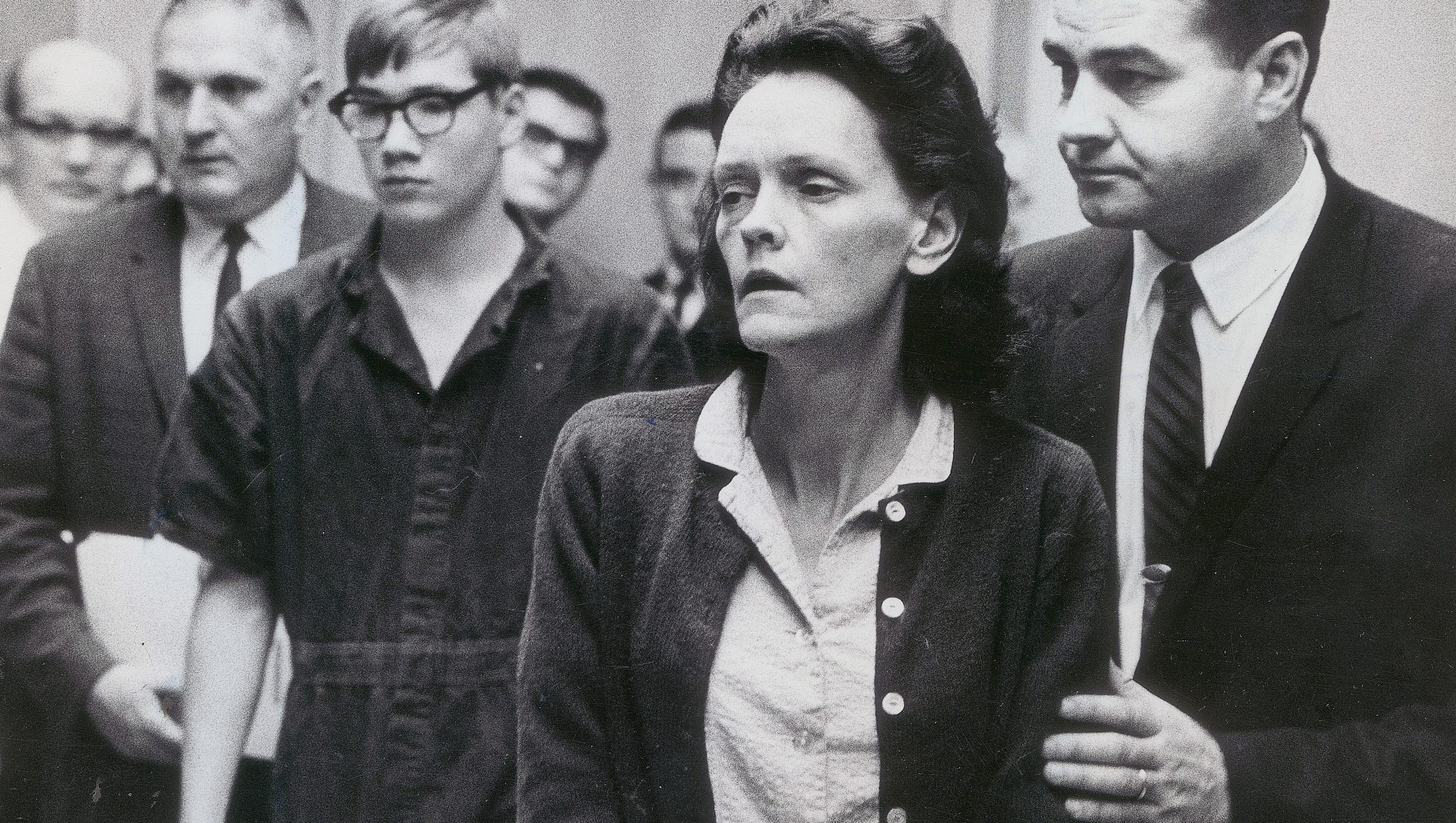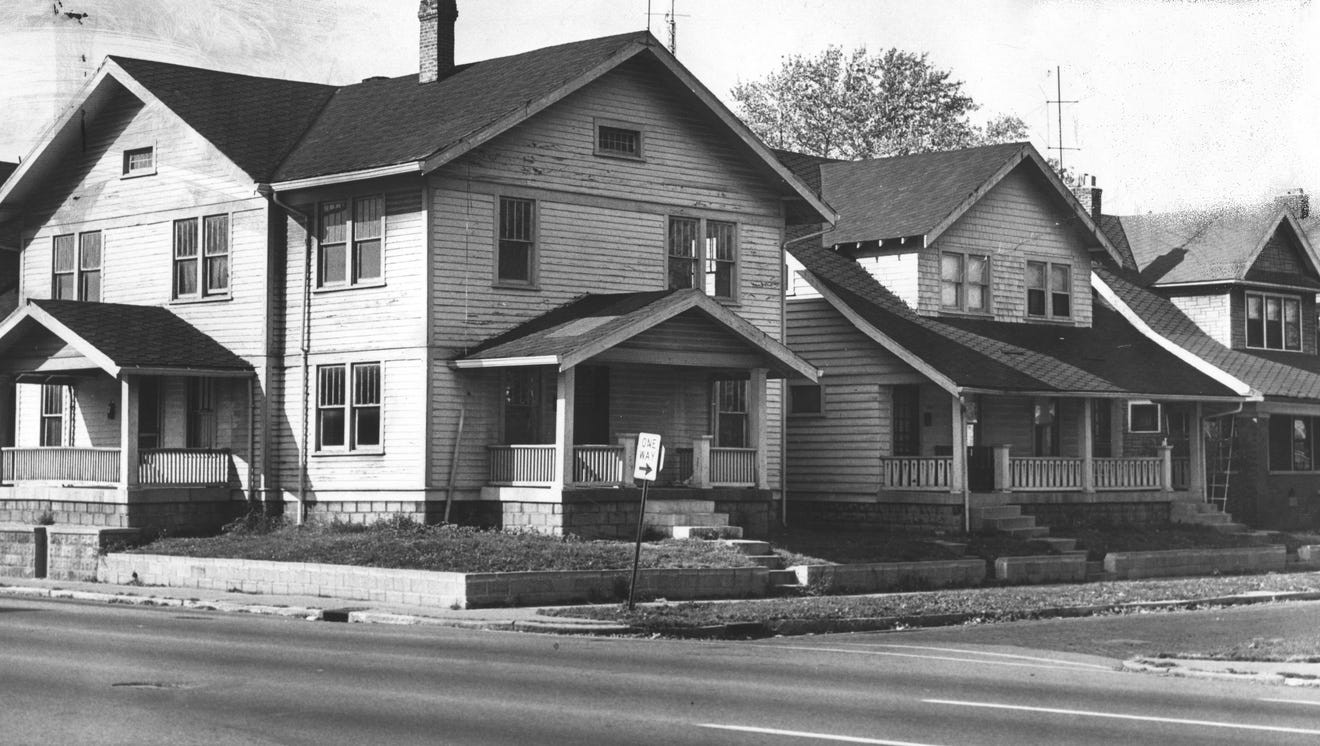In the annals of true crime, the case of Sylvia Likens stands out as a chilling example of human cruelty. While the name Gertrude Baniszewski, the matriarch of the family, became synonymous with this horrific crime, the involvement of her children, including John Baniszewski Jr., adds layers of complexity and tragedy to the narrative. This article delves into the story of John Baniszewski Jr. and his role in the events surrounding the death of Sylvia Likens in 1965.
 Richard D. Hobbs and Gertrude Baniszewski, appearing before Judge Harry Zaklan, November 1, 1965
Richard D. Hobbs and Gertrude Baniszewski, appearing before Judge Harry Zaklan, November 1, 1965
In July 1965, sisters Sylvia Marie Likens, 16, and Jenny Fay Likens, 15, were placed in the care of Gertrude Baniszewski in Indianapolis while their parents, traveling fair concessionaires, were away. What began as a boarding arrangement soon turned into a nightmare for Sylvia. The Baniszewski home, located on East New York Street, became the site of unimaginable torture and abuse inflicted upon Sylvia by Gertrude and, tragically, by some of her children and neighborhood kids, including John Baniszewski Jr.
On October 26, 1965, police were called to the Baniszewski residence and discovered Sylvia’s lifeless body. The scene was gruesome. Sylvia lay on a mattress, her body bearing the marks of extensive abuse. She was malnourished, covered in cuts, bruises, cigarette burns, and scald marks. The words “I am a prostitute and proud of it” were etched into her stomach, and a “3” was branded on her chest. The official cause of death was a subdural hematoma from a blow to the head, but the cumulative effect of shock and injuries contributed significantly to her demise.
Jenny Likens, witnessing her sister’s suffering and fearing for her own life, bravely approached the investigators, offering her testimony in exchange for immediate removal from the house. Her statement, along with the horrifying physical evidence, painted a picture of sustained and brutal torture.
The subsequent investigation led to the arrest of Gertrude Baniszewski and several others, including her children Paula, Stephanie, and the then 12-year-old John Baniszewski Jr., along with neighbors Coy Hubbard and Richard Hobbs. John Jr., despite his young age, was implicated in the horrific events that unfolded in his home.
The trial, which commenced in April 1966, became a national spectacle, drawing intense media attention. Testimony revealed the shocking extent of Gertrude Baniszewski’s active role in orchestrating and participating in the torture of Sylvia. Neighbors admitted to being aware of Sylvia’s deteriorating condition but failed to intervene, highlighting a disturbing community complicity. John Baniszewski Jr.’s precise involvement is less documented in public records compared to the older participants, but as a member of the household and among those initially charged, his presence and actions within that environment were undoubtedly part of the tragic narrative.
Gertrude Baniszewski was found guilty of first-degree murder and initially sentenced to life imprisonment. Her conviction was later overturned on appeal, but she was again found guilty in a 1971 retrial. Paula Baniszewski was convicted of second-degree murder, and Stephanie Baniszewski was acquitted. Coy Hubbard, Richard Hobbs, and John Baniszewski Jr. were all convicted of manslaughter and received sentences of 2 to 21 years. They were paroled after serving just 18 months in 1967.
 The corner home of Gertrude Baniszewski where Sylvia Likens was tortured and murdered. Two houses to the right is the home of Richard Hobbs.
The corner home of Gertrude Baniszewski where Sylvia Likens was tortured and murdered. Two houses to the right is the home of Richard Hobbs.
After his release, John Baniszewski Jr. adopted the alias John Blake and lived a life largely removed from public scrutiny. Remarkably, he became a lay minister, dedicating himself to counseling children of divorced parents. This later chapter of his life presents a stark contrast to his involvement in the Sylvia Likens case, raising complex questions about redemption and the possibility of change after such dark deeds. John Baniszewski Jr. passed away in 2005 at the age of 52 due to complications from diabetes.
The Sylvia Likens murder continues to resonate in popular culture, serving as a grim reminder of the depths of human depravity and the vulnerability of children. The case has been depicted in films like An American Crime (2007) and The Girl Next Door (2007), the latter based on Jack Ketcham’s novel, both drawing inspiration from the horrific events that transpired in the Baniszewski home.
John Baniszewski Jr.’s story is a disturbing facet of the Sylvia Likens tragedy. While his role may be overshadowed by his mother’s and older siblings’ actions, his involvement as a child within that abusive environment and his subsequent life choices offer a complex and unsettling perspective on this infamous case. The Sylvia Likens murder remains a stark and cautionary tale, prompting reflection on community responsibility, child protection, and the long shadows cast by acts of unimaginable cruelty.
